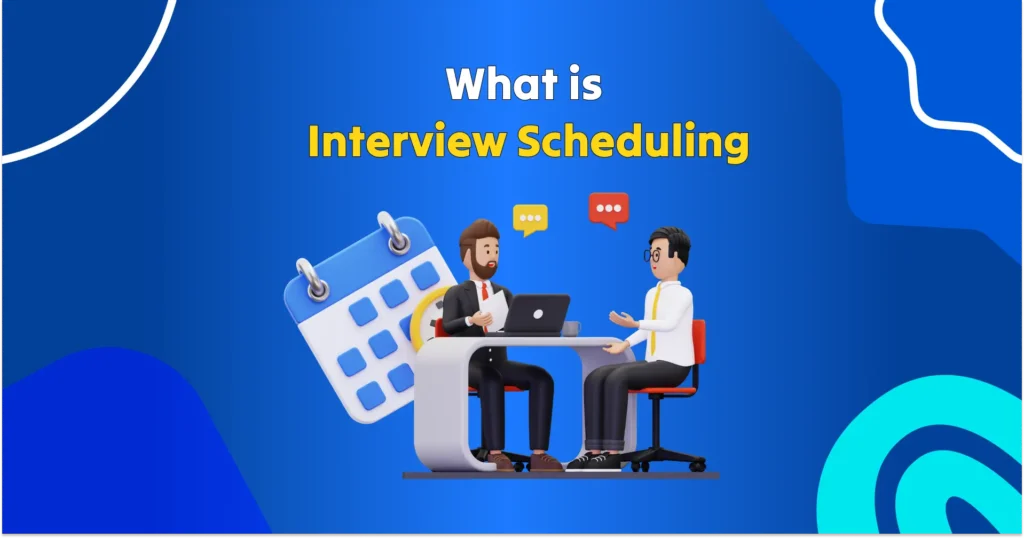
Agile Meetings: What Are They and How to Conduct Them?
In a world where 24 billion hours are wasted each year on unproductive meetings, it’s no wonder you might roll your eyes when another meeting invite pops up. We’ve all been in those shoes!
But the question is, are all meetings alike? What if there was a way to turn dull and boring meetings into productivity powerhouses? Then say hello to Agile Meetings. Think of it as the superhero of meetings—swift, effective, and here to save your day!
In this article, we’ll take a look into Agile meetings and explore the different types to help you pick the best format for your team. Plus, we’ve got some handy tips to make your meetings even better.
Ready to level up your agile meetings? Let’s jump in!
What are Agile Meetings?
Before we talk about how to run agile meetings, let’s understand what “agile” means. Agile stands for being quick and well-coordinated in movement. Unlike traditional meetings, agile meetings are more inclined towards being efficient, time-focused, and goal-driven,
Each Agile meeting has a specific goal, ensuring your team knows exactly what to do next and who’s responsible. It’s about providing clear directions and achieving goals efficiently without unnecessary detours.
Agile teams work in short bursts, regularly reviewing and adjusting their approach. These meetings focus on delivering value and sticking to strict time limits, making them more productive than regular meetings.
Who Should Attend Agile Meetings?
To ensure a productive agile meeting, only invite the members who need to be there. It is unnecessary to include individuals who have no significant contributions or are not in need of updates on the status of the project.
FluentBooking can help you to schedule meeting with your team by manually selecting members and limiting attendees.

The following team members (also called the typical scrum team) are involved and engaged in Agile scrum meetings:
Development Team
They are the ones who bring ideas to life. They build and improve the product or service. In agile meetings, they share what’s going on, raise any problems, and work with others to fix them. Their input keeps the project moving forward.
Scrum Masters
Think of them as the team’s coaches. They help everyone work together smoothly and solve any problems that come up. They ensure meetings run well and everyone knows what they’re supposed to do.
Product Owners
They are like the project bosses responsible for everything from setting goals and budgets to coordinating deadlines. They also advocate for the users and stakeholders, ensuring that the final product meets needs and expectations.
Stakeholders
In Scrum meetings, stakeholders like clients, users, or product managers join to evaluate and provide feedback on the team’s work at the end of each sprint. They aren’t part of the Scrum Team but have a strong interest in the product.
Now that you have a better understanding of agile meetings and the types of people involved in scrum teams, let us explore the various types involved.
What are the 5 Types of Agile Meetings?
You wouldn’t head out without clear directions for a road trip, right? Think of agile meetings (also called scrum meetings) as using a GPS for that road trip. They are your trusty navigator: direct, focused, and designed to get you to your destination quickly.
Now, let’s go and learn about the different types of agile meetings along with effective tips that you can utilize to make the best out of them:
Sprint Planning Meeting
The sprint planning meeting is where the team gets together to figure out what they’ll work on during the next sprint. This meeting happens before or at the start of each sprint. The team decides which tasks to tackle and outlines strategies to achieve sprint goals.
The agenda for a sprint meeting usually looks like this:

Tips for Conducting an Effective Sprint Planning Meeting
- Define the sprint goal and prepare the backlog for discussion
- Discuss the inputs or resources needed for a successful sprint
- Set a strict time limit for the meeting to stay focused and avoid running over time
- Ensure the product owner prioritizes the product backlog and is ready beforehand
- Clarify any unclear requirements with stakeholders
- Plan for collaboration among team members, prioritizing teamwork over individual task optimization
- When planning a sprint, always allow some slack time for any unexpected issues that come up
Duration of Sprint Planning Meetings
The duration of a sprint planning meeting can vary based on the length of the sprint. Try to allocate 2 hours of meeting time for every week of the sprint.
- For a 1-week sprint: 2-hour sprint planning meeting
- For a 2-week sprint: 4-hour sprint planning meeting
- For a 3-week sprint: 6-hour sprint planning meeting
Pro tip: You can use project management tools like FluentBoards to display the tasks that need to be completed. This makes the Sprint Goal clearer for everyone involved.
Daily Standup Meeting/Daily Scrum Meeting
The Daily Scrum, also known as the Daily Standup, is a short, daily touchpoint during the sprint.
The name “standup” comes from the practice of standing to keep the meeting short and focused. It’s the shortest and most frequent agile meeting, designed to keep everyone aligned and on track.
Each participant answers three key questions:
- What did you do yesterday?
- What will you do today?
- Do you have any blockers?
During the Daily Scrum, developers discuss their achievements and upcoming tasks. The Scrum Master may facilitate, but attendance is optional for them. All team members participate, rotating to share their progress updates.
Tips for Conducting an Effective Sprint Planning Meeting
- Hold the meeting at the same time and place every day to ensure everyone attends
- Stick to the three main questions to stay on topic
- Resolve any issues or roadblocks right after the meeting
- Track action items and follow up with team members during the day
- Discuss progress and blockers, not strategies
- Don’t update the sprint backlog during the meeting
- Emphasize that the meeting is for team commitments, not status updates
Duration of Daily Standup Meetings
The duration and schedule for daily standup meetings are as follows:
- Time-boxed to 15 minutes to keep them quick and focused
- Typically scheduled in the mornings to kickstart the day’s tasks
- Set at the same time and place each day for consistent attendance
Sprint Review Meeting
A sprint review meeting is an important part of the Scrum process where the development team shows the work they completed during the sprint to the product owners, project managers, and investors.
A Sprint review meeting is held at the end of each sprint. The main goal is to demonstrate progress, get feedback, and plan for the next sprint.
The product owner usually leads the meeting by highlighting new features and improvements. The Scrum Master ensures the meeting runs smoothly and is well-organized. Stakeholders ask questions and give feedback, which helps update the product backlog and guide future work.
Tips for Conducting an Effective Sprint Review Meeting
- Conduct practice demos to ensure clarity and effectively communicate the project’s value
- Encourage active participation from stakeholders to collect diverse insights and feedback
- Incorporate feedback into the product backlog to continuously improve the project’s outcomes
- Instead of just discussing the sprint’s results, emphasize their practical value
- Address any unachieved goals and be prepared to adjust the backlog accordingly
- Share all relevant documents and materials in a centralized digital space for all participants to have easy access
Duration of a Sprint Review Meeting
The duration of a sprint review meeting depends on the length of the sprint:
- One-week sprint: Around one hour
- Two-week sprint: Around two hours
Pro Tip: It is recommended to extend the meeting for longer sprints, but keep it under four hours. This maintains focus and productivity, allowing time for demos, feedback, and planning without overwhelming participants.
Sprint Retrospective Meeting
It is held after the sprint review. The main purpose is to reflect on the team’s performance during the sprint.
A Sprint retrospective meeting is held by the Scrum master and it usually includes the development team and the product owner.
During the meeting, participants discuss what went well, what didn’t, and how to improve. This helps identify strengths and areas needing improvement to enhance team collaboration in future sprints. Key questions asked are:
- What did we do well?
- What mistakes did we make?
- What can we do differently next time?
Topics might include project milestones, conflicts, communication issues, bottlenecks, and potential improvements. This informal, internal meeting allows team members to freely share their thoughts without external stakeholders present.
Tips for an Effective Sprint Retrospective Meeting
- Begin by highlighting accomplishments before discussing areas for improvement
- Create an environment where team members feel safe to share their thoughts
- Instead of yes/no questions, ask questions that require detailed answers, like “What challenges did you encounter?”
- Start with warmups or icebreakers to build connection and trust among team members
- Ensure the meeting ends with specific action items for the next sprint
- Always look for ways to improve, even if the sprint was successful
Duration of the Sprint Retrospective Meeting
A common guideline is to allocate about 45 minutes for each week of the sprint. For example:
- A one-week sprint might have a 45-minute retrospective
- A two-week sprint might have a 1.5-hour retrospective
- A one-month sprint might have a 3-hour retrospective
Keeping the meeting focused and within these time limits ensures it stays productive and engaging for everyone involved.
Backlog Refinement Meeting
A backlog refinement meeting, also called backlog grooming, is where the project team updates the product backlog. This means adding, removing, or changing items to keep them clear and ready for future sprints.
This meeting is not mandatory but is crucial for planning the next steps. Unlike other agile meetings, it can happen at any time during the sprint.
During a backlog refinement meeting, Developers and the Product Owner work together to break down big tasks, add details, set priorities, and estimate sizes.
Tips for a Productive Backlog Refinement Meeting
- Make sure you know what the project goals are and what items are in the backlog
- Keep discussions focused on the project’s overall goals
- Use the meeting to identify and deal with potential issues
- Make sure everyone knows what they need to do after the meeting
- Take into account what stakeholders have said about the backlog
- You shouldn’t make final estimates until the sprint is complete
- Remove irrelevant tasks and update requirements as needed
Duration of the Backlog Refinement Meeting
Backlog refinement meetings usually last between 30 minutes to one hour. They happen regularly, maybe every two weeks, to keep the backlog up-to-date. The length and frequency can change based on what the team needs.
What are the Benefits of Agile Meetings?
Did you know that in 2020, the number of marketers using agile meetings jumped by about 25%? That shows just how effective these meetings can be!
Agile meetings provide the following benefits:
- Better Collaboration: Promote open communication and teamwork
- Manageable Tasks: Break down projects into smaller, more achievable parts
- Continuous Adaptability: Enable constant feedback and quick adjustments
- Higher Quality: Frequent testing helps catch and fix issues early
- Employee Engagement: Encourage team involvement and personal commitment
- Customer Satisfaction: Ensure the product meets customer needs with direct input
- Efficient Planning: Streamline workflow, optimize resources, and cut costs
Adopt Agile Meeting Strategies & Boost Productivity!
Agile meetings are incomparable when it comes to keeping your team aligned and efficient. Done well, they prevent long, unfocused discussions and ensure meaningful contributions.
Conducting scrum meetings in your workplace along with the right tools can boost productivity and speed up project delivery. Utilize the insights discussed in this article, and start planning your Agile meetings today.
Give it a try and see the difference yourself!
Frequently Asked Questions (FAQ)
Do you still have questions? Don’t worry, we got you covered!
Maisha Abedin
Hey, it’s Maisha! I enjoy crafting stories and producing content that adds value to readers. Outside of work, you will either find me capturing the beauty in the mundane or daydreaming about the perfect lasagna!
Table of Content
Subscribe To Get
WordPress Guides, Tips, and Tutorials











Leave a Reply